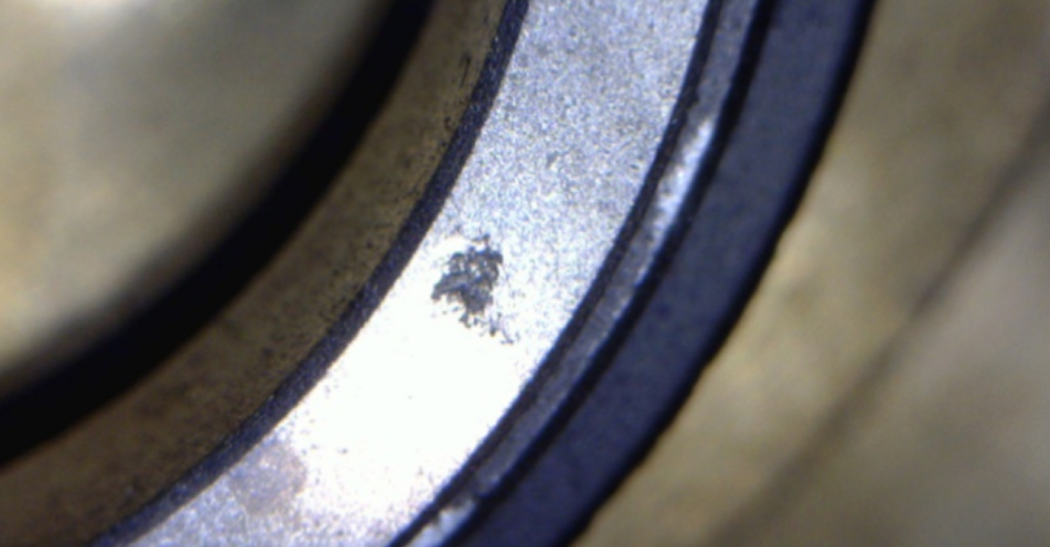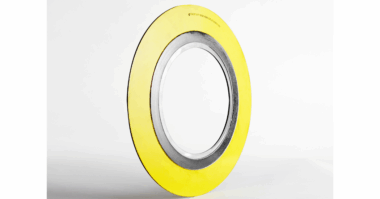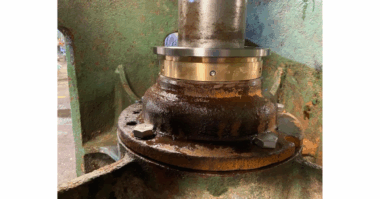For years, manufacturers have struggled with proper sealing of low viscosity fluids. Effectively stopping materials like Freon refrigerants, acetone, propane, and liquid oxygen are vital to production for industry leaders. Fortunately, there is now a solution to this (un)impenetrable problem: antimony-impregnated carbon graphite.
There are two reasons why low viscosity fluid has posed such a sealant issue. First, these liquids form an incredibly thin hydrodynamic film, which often causes blistering of the seal face.
When sealing any type of fluid, the hydrodynamic film that forms between the two sealing faces is a critical barrier which:
- prevents fluid flow past the seal and
- protects both the seal and its counterface from each other.
Low viscosity fluids form a very thin film, which forces the two sealing faces to run in very tight proximity. Most resin-impregnated carbon graphites do not have the dimensional stability to operate within such tight clearances. At high rotational speeds, any flexing of the seal can cause destructive contact between the seal and its counterface.
Metal impregnation of carbon graphite seals is the most effective method of addressing both issues simultaneously. Antimony-impregnated carbon graphite, specifically, has proven to be the ideal material for sealing low viscosity fluid applications.
An antimony impregnation offers the stiffness required to prevent contact between the seal and its counterface. As an added benefit, antimony-impregnated carbons have a self-polishing characteristic, meaning they take on the surface finish of the harder counterface. For this reason, counter faces should be as hard and smooth as possible.
Blistering is another main cause of seal failure in low viscosity fluid applications. Blisters are irregularities in surface topography which form mainly in “stop-start” applications with low viscosity oils and some degree of thermal cycling. When oil seeps into the micro-porosity of the carbon and is heated, it can volatilize and expand rapidly. This expansion distorts an otherwise polished surface and forms blisters, which ultimately cause leakage paths to form.
Resin-impregnated carbon graphite grades contain some micro-porosity because thermal setting resin shrinks slightly when it cures. Although the porosity formed from this shrinkage is small, it is large enough to allow for blistering in certain applications.
The same is true for most metal-impregnated grades—except antimony. Antimony actually expands as it solidifies, so there is essentially no micro-porosity upon curing. Without any micro-porosity, low viscosity oils have nowhere to seep into and cause blistering.
When using antimony-impregnated carbon, it’s important to select the proper counterface material for the antimony-impregnated carbon to run against. Solid, sintered silicon carbide has proven to be the best counterface material, as it is an incredibly hard and durable material. Additionally, it has a low available micro-porosity and high thermal conductivity, so it can dissipate heat very easily and prevent hot spots from forming at the seal, which is critical in blister prevention.
Preventing blistering and destruction of a seal will ultimately prevent your operations from losing time and money dealing with faulty equipment that can be easily avoided. Get in touch with us to find out how we can help you choose the materials that will make your operations function more safely and efficiently.




